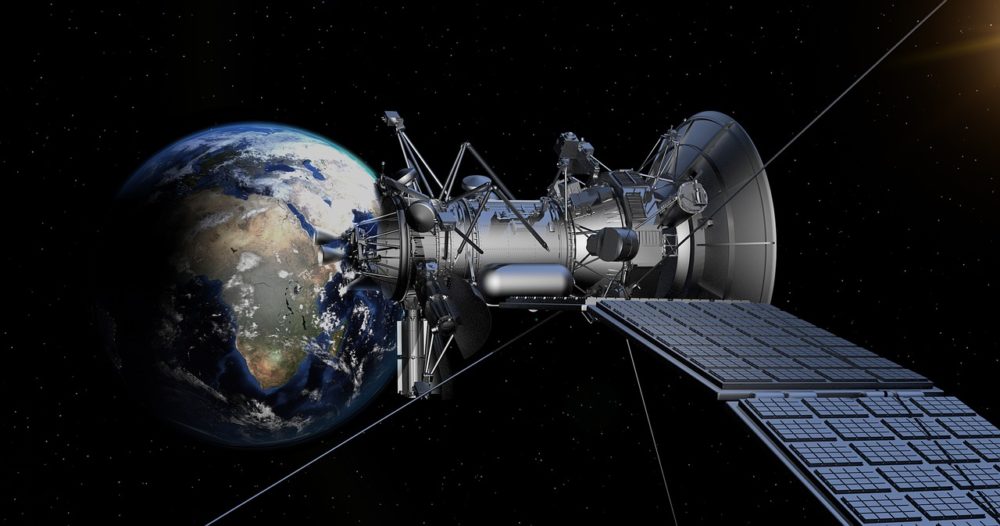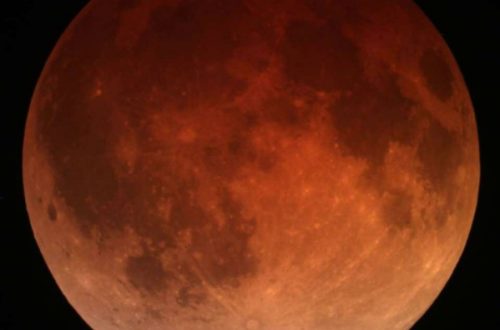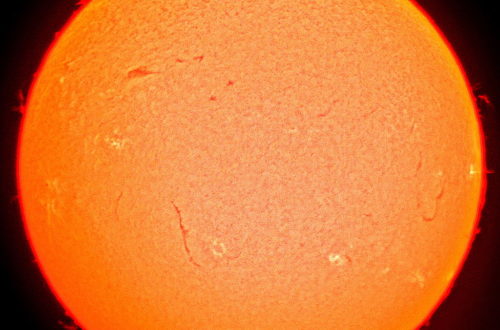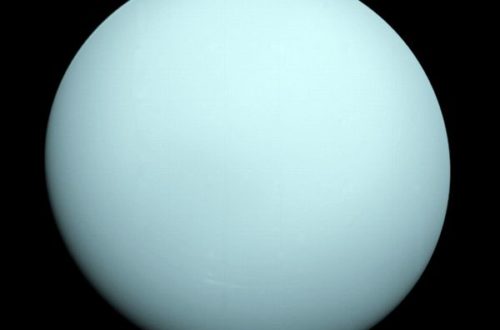How Will the Internet of Things Change Space Exploration?

The Internet of Things (IoT) has the potential to change our world immensely. It will present new opportunities, as well as new challenges.
IoT refers to the idea of connecting virtually any electronic device to the Internet and connecting them through the Internet to each other. This includes cell phones, watches, toasters, washing machines, ovens, lamps and an endless list of other things. It also includes parts of machinery, such as the engine in your car or a conveyor belt in a factory.
Benefits and Drawbacks for the Internet of Things
IoT allows our devices to talk to each other, making them more efficient and useful. For example, your fridge could let you know when you’re low on milk or even automatically order more. Your car could have access to the weather and your calendar, so it defrosts your windshield and warms up your vehicle just before it’s time for you to leave. The pipes that carry water through your city could alert the proper authorities when they detect a leak. There are plenty more possibilities, too, that we probably can’t even imagine yet.
The rise of IoT devices comes with its difficulties, though, as well. Security has been a contentious topic of conversation. We’re still not sure how companies will deal with the massive amounts of data IoT will generate.
Astronomers have also jumped in on the IoT conversation, and it turns out they have some issues with the up-and-coming network of connected devices.
Stay Off My Frequency
When discussing IoT, there’s a problem that revolves around the use of the radio spectrum. Cell phones use it. GPS uses it. Astronomers use it to observe and chart outer space with giant radio telescopes. And now, iRobot, the company that makes the Roomba vacuum cleaner, wants to use it to guide their new robotic lawn mower.
There’s only one problem with that. It turns out the frequencies from 6240 to 6740 MHz iRobot asked the FCC for permission to use are the same ones astronomers use for their telescopes.
Robots vs. Telescopes
To use the new lawnmower, stakes are driven into the ground that outline the boundary of the user’s lawn. The stakes talk to the robot and help it stay within the confines of the lawn it’s mowing. Because the infrastructure would be fixed and set up outdoors, it requires special permission from the FCC.
Astronomers with the National Radio Astronomy Observatory (NRAO) said use of these lawnmowers could interfere with several telescopes. To protect their telescopes, the NRAO claimed a distance of 55 miles was needed between the lawnmowers and areas where the telescopes operate.
iRobot, however, maintained that their devices wouldn’t interfere with the astronomical equipment, because the signal is contained within people’s yards. According to the company, a distance of 12 miles should be enough.
According to astronomers, though, this is a misunderstanding. Because the signals the telescopes read come from so far away, they are rather weak. A smaller signal up close, such as one from a robotic lawnmower, could drown them out.
Possible Solutions
The decision belonged to the FCC, and in the end they sided with iRobot, granting them a waiver and agreeing that the lawn-mowing bots wouldn’t interfere with telescopes.
This case may set a precedent for a type of cases we’re likely to see many more of in the future. As IoT expands, the laws surrounding it will develop as well.
However, another possibility that may make all sides happier, should the need arise, is to introduce “quiet zones.” This is basically an area around an observatory where you can have nothing with a wireless signal, no microwaves or no anything along those lines, period.
IoT and Astronomy
Figuring out the details of iRobot’s IoT technology caused astronomers a bit of a headache. It’s quite likely, though, that IoT technology will one day aid in space exploration and astronomy in a very meaningful way.
It’s difficult to know exactly how astronomy and IoT will work together in the future, but one can imagine telescopes and other equipment around the world talking to each other and comparing data. Better communication and collaboration could lead to new discoveries and new possibilities in space exploration.
The Internet of Space Things
Another new development revolutionizing the way we explore and interact with space is The Internet of Space Things (IoST). This technology is an extension of the Internet of Things (IoT) and enables communication between objects and devices in space, as well as on Earth.
The IoST includes a network of satellites, sensors, and other devices that collect and share data about space and the objects in it. This data can be used for a wide range of applications, including communication, navigation, remote sensing, and space weather forecasting.
One of the most significant advantages of the IoST is that it enables real-time monitoring and management of space assets. Satellites can communicate with one another and with ground stations to optimize their orbits and avoid collisions, ensuring the safe and efficient operation of space infrastructure. This is becoming increasingly important as there are more and more satellites being launched each year. Also, large satellites are being replaced with many small satellites (microsatellites, smallsats or cubesats) in a trend of satellite miniaturization.
New scientific discoveries will be made possible thanks to the IoST. By collecting data from sensors placed on asteroids, planets, moons, and other celestial bodies, scientists can gain a better understanding of the universe and the objects within it. This knowledge can lead to new discoveries and advancements in space exploration and astronomy.
As the IoST develops, it has the potential to transform our understanding of space and how we interact with it. With its real-time monitoring capabilities and enabling new scientific discoveries, the IoST is has the potential to change the way we explore and utilize space resources for the benefit of humanity.
How AI Can Take IoT to the Next Level
IoT and astronomy will likely become interconnected, but that’s not the only up-and-coming technology that will play a role. Machine learning and IoT are going to become increasingly integrated as time goes on, making IoT data even more useful.
Machine learning, a sector of artificial intelligence, is the ability of machines to learn from data rather than just follow instructions laid out in code. Machine learning is already being used in a variety of areas. Financial institutions use it to detect fraud. Pandora uses it to figure out what songs you like. Google used it to teach a computer program to beat human players at board games, mostly just to prove how much machines could teach themselves.
For IoT, machine data will be absolutely necessary for the technology to really be useful. IoT devices are capable of collecting huge amounts of data. They can collect so much, in fact, that it would take humans forever to find any useful patterns or information in it.
Computer programs can sort through the data and, through machine learning, figure out what data points could be useful. They can learn what’s normal and point out abnormalities or identify patterns in consumer behavior.
Machine learning requires a lot of data to learn, and IoT creates more data than people know what to do with, so the two technologies work together very nicely. By integrating AI into IoT devices, those gadgets will become much more powerful.
How to Apply Machine Learning to IoT Data
To apply machine learning to IoT data, you need to identify what problem you want to solve. Then, you can decide how best to use the technologies.
Astronomers might use it, for example, to detect new objects that appear in the sky. They could direct a computer program to learn what’s normal and alert them if anything interesting happens.
iRobot could direct its lawnmowers to scour data about electricity use, grass height, weather and the path it takes when mowing to determine how and when to most efficiently cut the grass. The machines could then deploy themselves automatically at just the right times.
If you’re just starting out with machine learning and IoT data, you should make sure you’re informed about both the capabilities and limitations of the technologies. If you really want to dig deep, hire an expert or partner with a relevant research institution. You should also be prepared to do some experimenting, because these are relatively new technologies.
As evidenced by the scuffle between the astronomers and the lawnmower manufacturers, you might also need to anticipate some possible trouble with regulations. The technologies are still being developed, so the rules are not yet entirely set in stone.
When using machine learning, it’s beneficial to collect as much data as possible though your IoT gadgets. Computers are capable of analyzing huge stockpiles of information and may find something useful that a human would never have even thought to look for.
IoT will have a significant impact on many aspects of our society, especially when partnered with other powerful tools like artificial intelligence. From mowing our lawns to charting the stars or connecting satellites, this technology will change almost everything. It may take some time to figure out the relevant laws and work out the kinks, but those hurdles certainly won’t stop the spread of the Internet of Things.
Would you like to receive similar articles by email?





